A disc of circumference s is at rest at a point A on a horizontal surface when a constant horizontal force begins to act on its centre. Between A and B there is sufficient friction toprevent slipping, and the surface is smooth to the right of B.AB=s. The disc moves from A to B in time T. To the right of B,
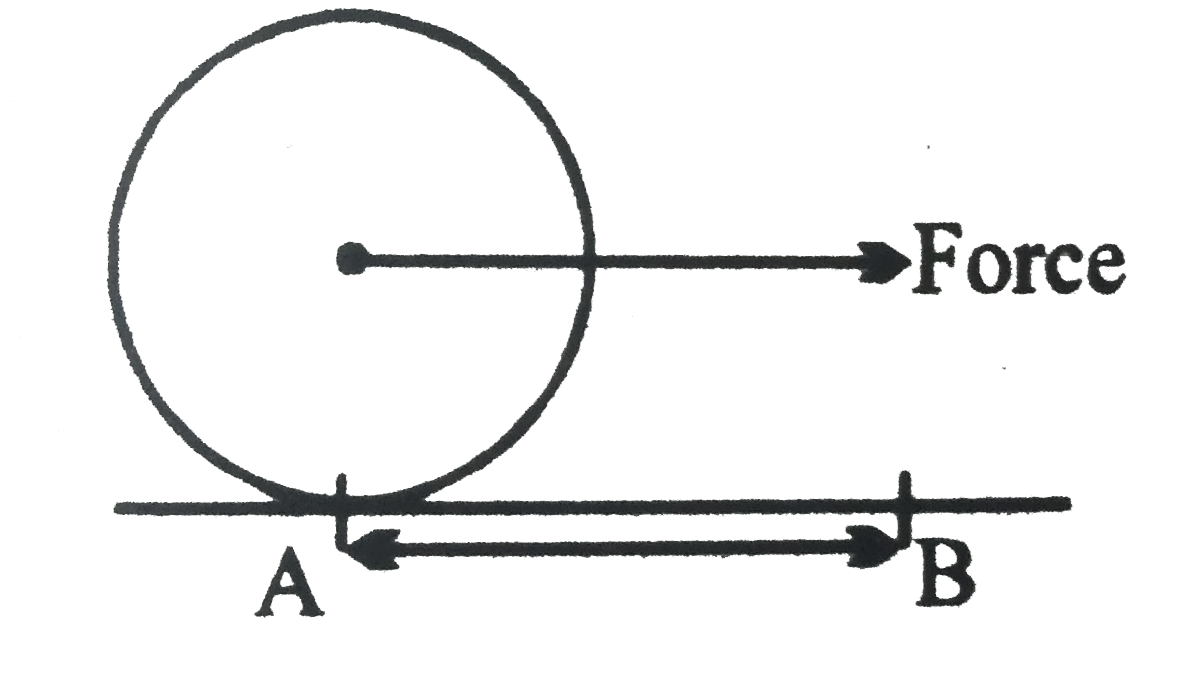 .
.
the angular acceleration of the disc will disappear linear acceleration will remain unchanged
. linear acceleration of the disc will increase
the disc will make one rotation in time T/2
the disc will cover a distance greater than s in further time T
The correct Answer is:B, C, D
Let P=external force F= force of friction between A and B a1= acceleration between A and Ba2= acceleration beyond B
P−F=ma1
P=ma2
a2>a1
Let α=angualar acceleration between A and B
For one rotation θ=2π=12αT2
T=√4πα= time of travel from A to B
angular velocity at B=ω0=αT
For one rotation to the right of B
θ=2π=ωBt
t=2πaT=12αT2αT=T2
Topper's Solved these Questions
- RIGID BODY DYNAMICS 2BOOK - CENGAGE PHYSICS ENGLISHCHAPTER - RIGID BODY DYNAMICS 2EXERCISE - Multiple Correct
26 Videos
- RIGID BODY DYNAMICS 2BOOK - CENGAGE PHYSICS ENGLISHCHAPTER - RIGID BODY DYNAMICS 2EXERCISE - Linked Comprehension
71 Videos
- RIGID BODY DYNAMICS 2BOOK - CENGAGE PHYSICS ENGLISHCHAPTER - RIGID BODY DYNAMICS 2EXERCISE - Subjective
19 Videos
- RIGID BODY DYNAMICS 1BOOK - CENGAGE PHYSICS ENGLISHCHAPTER - RIGID BODY DYNAMICS 1EXERCISE - Integer
11 Videos
- SOUND WAVES AND DOPPLER EFFECTBOOK - CENGAGE PHYSICS ENGLISHCHAPTER - SOUND WAVES AND DOPPLER EFFECTEXERCISE - Integer
16 Videos
Similar Questions
A block B is pushed momentarily along a horizontal surface with an initial velocity v . If mu is the coefficient of sliding friction between B and the surface, block B will come to rest after a time:

View SolutionA block B is pushed momentarily along a horizontal surface with an initial velocity v . If μ is the coefficient of sliding friction between B and the surface, block B will come to rest after a time:

View SolutionA body of mass 5 kg is at rest on a smooth horizontal surface. A horizontal force 'F' acts on it for 4s and then ceases to act. If the body travels 40 m in the next 5s, the value of F is,
View SolutionA block 'B' rests on 'A'. A rests on a horizontal surface 'C which is frictionless. There is friction between A and B. If 'B' is pulled to the right, (If P is less than frictional force between A and B)
View SolutionA disc of radius R and mass M is under pure rolling under the action of a force F applied at the topmost point as shown in figure. There is sufficient friciton between the disc and the horizontal surface. The acceleration is given as
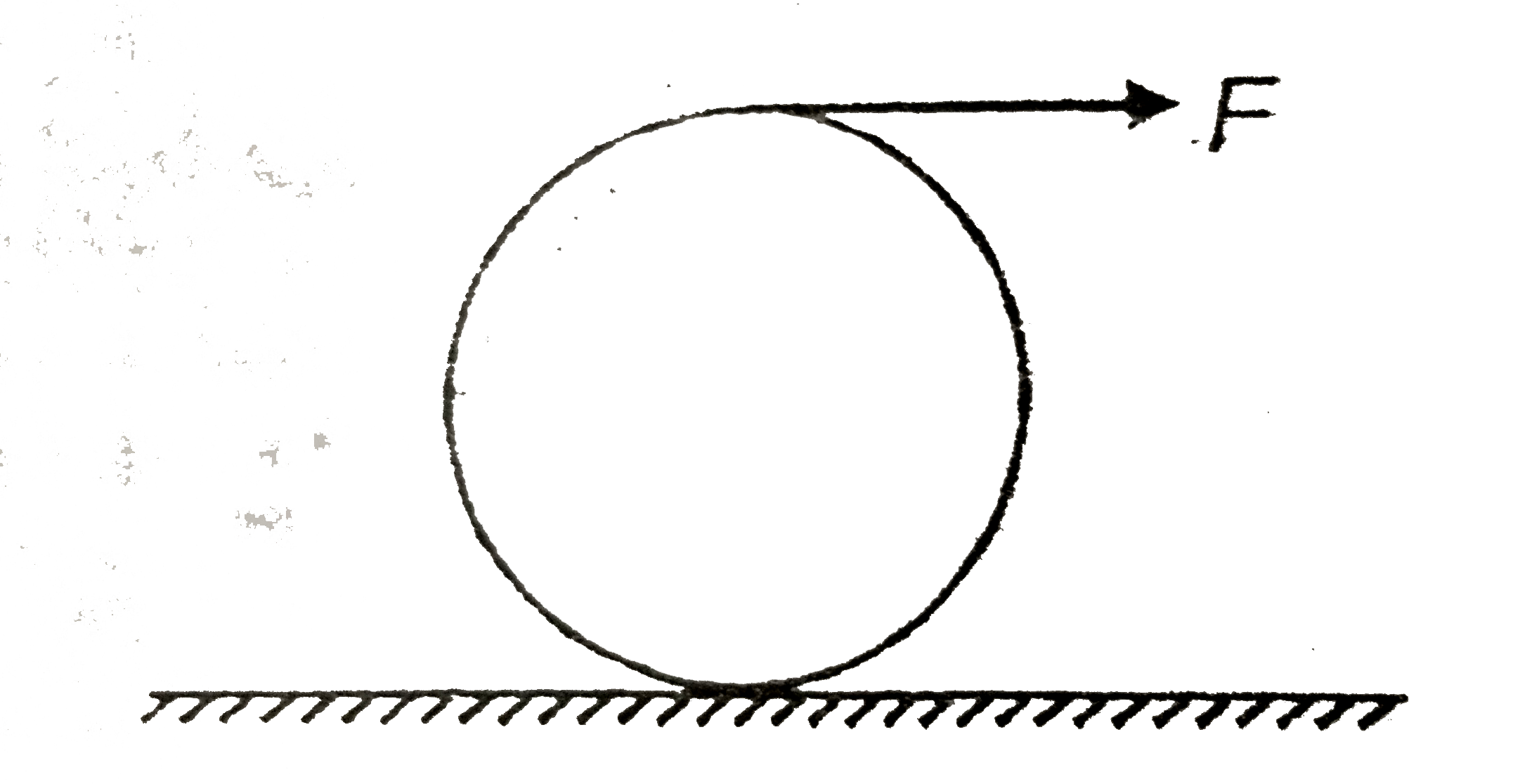
View SolutionThree identical cubes each of mass m are place on a smooth horizontal surface.A constant force F is applied on A as shown in the figure.The force on B applied by C is
View SolutionA cubical block of height a and width b is placed on the horizontal surface with sufficient fricition. For a given force.
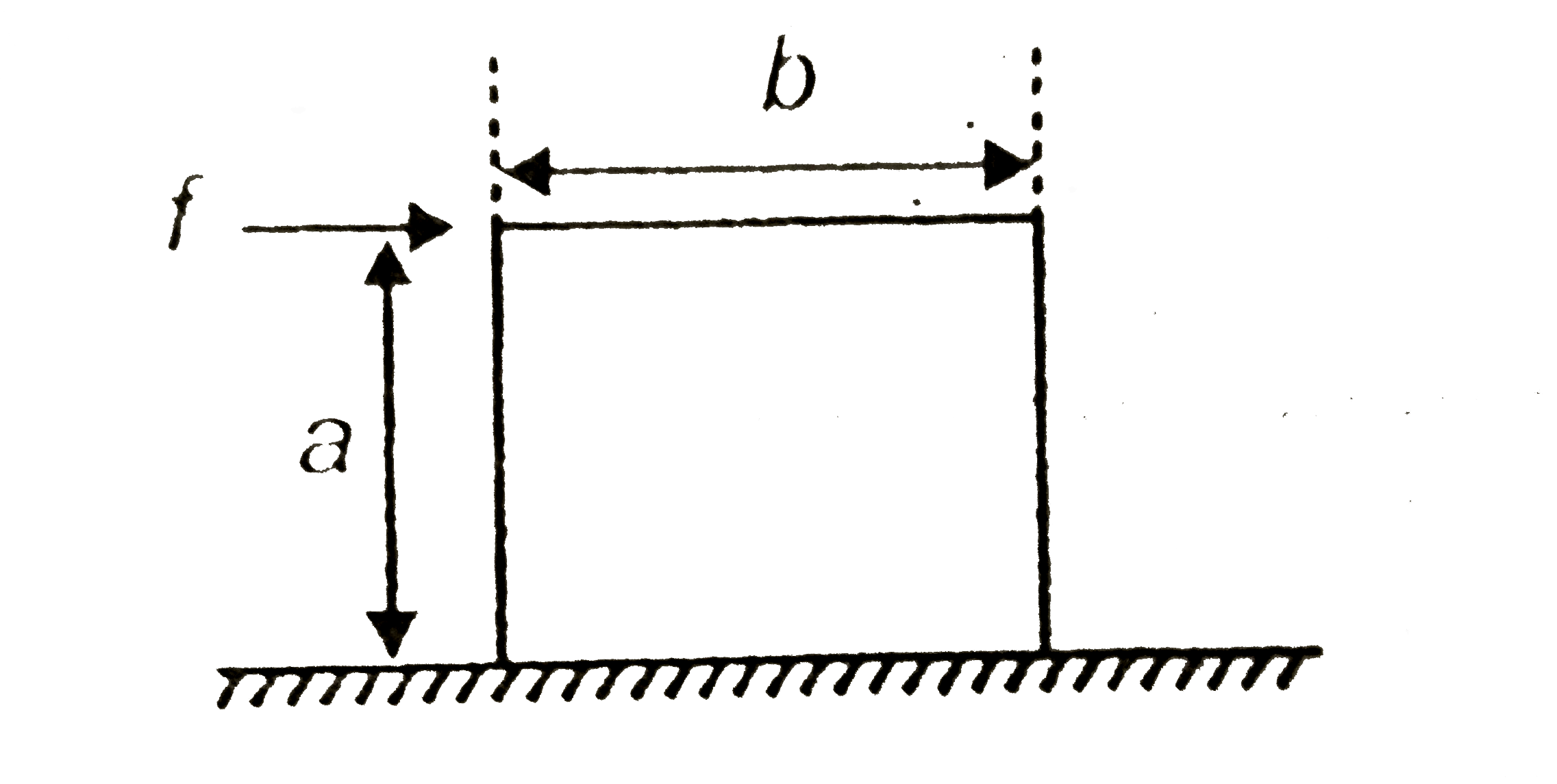
View SolutionA sphere S rolls without slipping with a constant speed on a plank P. The friction between the upper surface of P and the sphere is sufficient to prevent slipping, while the lower surface of P is smooth and rest on the ground. Initially P is fixed on the ground by a pin N. If N is suddenly removed
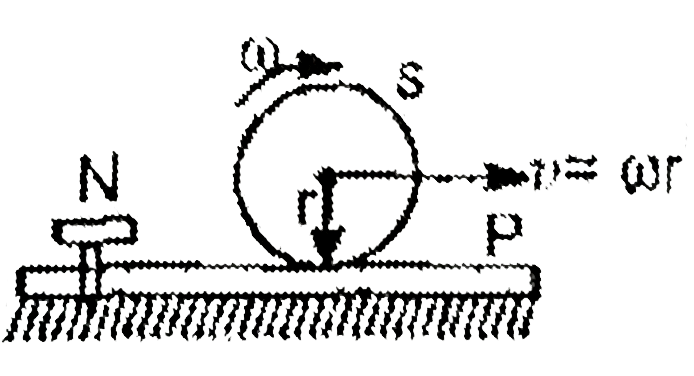
View SolutionA sphere is rolling without slipping on a fixed horizontal plane surface. In the figure, A is the point of contact, B is the centre of the sphere and C is its topmost point. Then
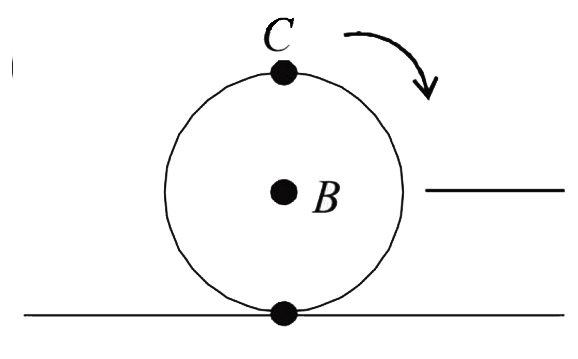
View SolutionTwo blocks A and B are placed one over the other on a smooth horizontal surface. The maximum horizontal force that can be applied on the lower block A, so that A and B move without separation is 49N. The coefficient of friction between A and B is (take g = 9.8ms−2 )
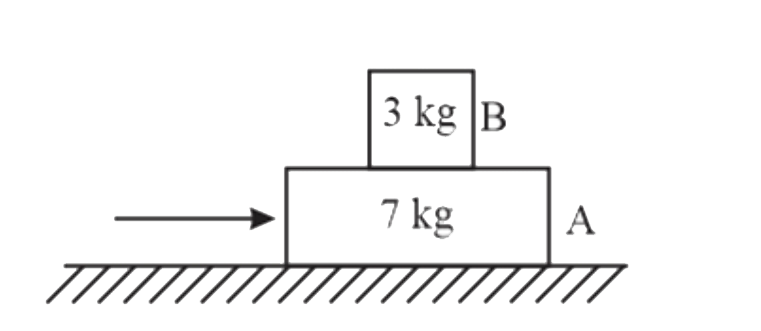
View Solution